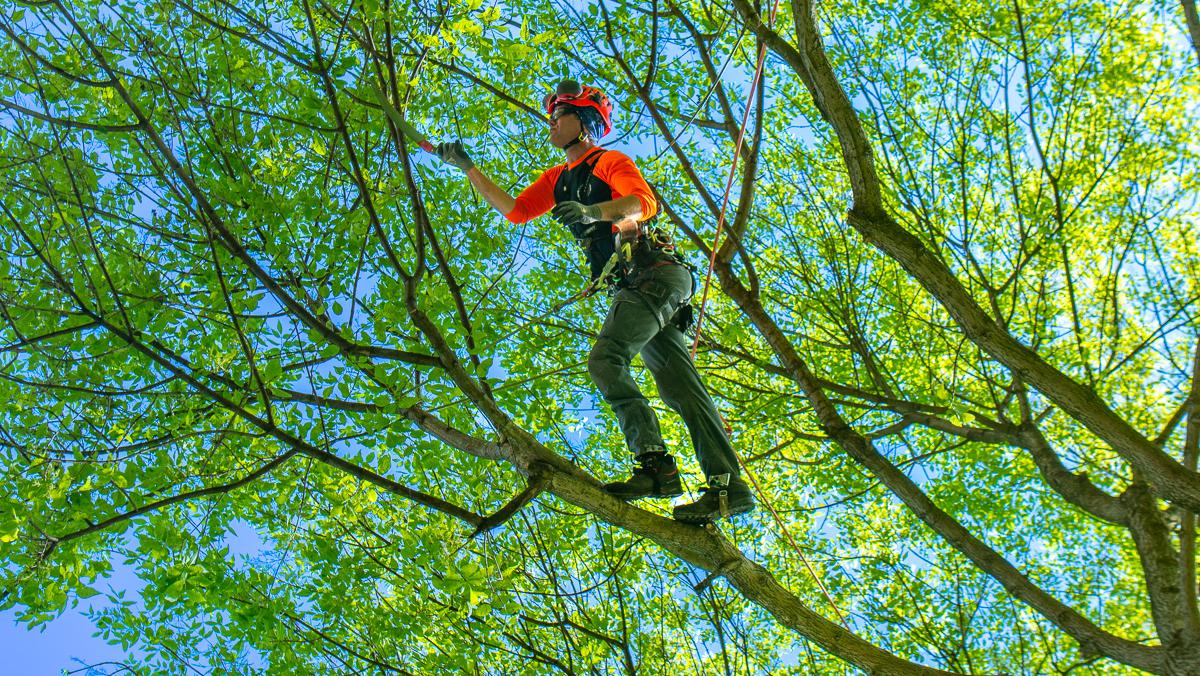Tree Health And Safety Link
Tree health is crucial for maintaining a strong ecosystem and ensuring safety in urban environments. A healthy tree can withstand diseases, pests, and environmental stressors better than a compromised one. Therefore, monitoring the health of trees is essential for property owners, cities, and anyone who appreciates nature.
Several factors affect tree health, including soil quality, water availability, and exposure to sunlight. Trees with poor soil conditions may struggle to develop strong root systems. This can lead to instability, making them more susceptible to falling during storms.
Common Tree Diseases
Just like humans, trees can suffer from various diseases. Common ailments include root rot, leaf spot, and cankers. Each of these diseases can have serious implications for a tree’s structural integrity.
- Root Rot: Often caused by overwatering or poor drainage.
- Leaf Spot: A fungal infection that affects the tree's leaves.
- Cankers: Sunken areas on the bark that indicate damage or infection.
Signs of a Healthy Tree
Identifying a healthy tree is easier than you might think! A robust tree typically has a full canopy, vibrant leaves, and a sturdy trunk. If you see these signs, the tree is likely in good shape. Regular inspections can help catch problems early.
Look out for symptoms like discolored leaves, unusual growth patterns, or peeling bark, which may indicate illness. Early detection can often save a tree and prevent safety hazards. To know more visit https://www.safecanopycare.com/
Tree Safety Considerations
Tree safety is more than just ensuring trees are healthy; it’s about understanding their placement and potential risks. Trees near houses, power lines, or sidewalks can pose hazards if not properly managed. Regular maintenance, including trimming and removal of dead branches, is vital.
Being proactive helps avoid accidents or property damage during severe weather. Remember, a strong storm can turn even the healthiest tree into a falling hazard if it’s too close to structures or people. Safety should always be a priority!
Tree Maintenance Tips
To maintain tree safety and health, consider these simple tips:
- Regularly inspect trees for signs of disease.
- Prune dead or weak limbs.
- Water during dry periods, especially young trees.
Hiring Professionals
Sometimes, it’s best to leave tree care to the experts. Hiring a certified arborist can provide peace of mind and ensure that trees are cared for properly. These professionals can assess tree health and recommend treatment or maintenance plans.
When hiring, look for qualifications and references. A reputable arborist will also prioritize safety, ensuring both the trees and surrounding areas are protected.
The Tree Health and Safety Link
Understanding the link between tree health and safety is critical for anyone responsible for tree care. Healthy trees are less likely to cause accidents, while sick or damaged trees can pose significant risks. By focusing on both aspects, we can create safer environments for ourselves and our communities.
Implementing a regular tree care routine can prevent potential hazards. This includes monitoring growth patterns, assessing soil conditions, and staying aware of any signs of distress. Proper tree management is not just about aesthetics; it's about safety!
Community Awareness
Educating communities about tree health and safety is essential. Programs that promote tree planting and care can enhance local landscapes. They also encourage responsible stewardship of nature, which benefits everyone.
Consider participating in local workshops or initiatives that focus on tree maintenance. These activities foster a sense of community while promoting the importance of healthy trees.
Conclusion
In conclusion, the connection between tree health and safety is vital for ensuring the well-being of our environment. By prioritizing tree maintenance and involving professionals when necessary, we can create safer spaces for ourselves and future generations. Remember, healthy trees lead to safer communities!
Frequently Asked Questions (FAQs)
- What is tree health and why is it important?
- Tree health refers to the overall condition and vitality of a tree, which is crucial for maintaining a strong ecosystem and ensuring safety in urban environments. Healthy trees resist diseases, pests, and environmental stress better than compromised trees.
- What are common diseases that affect trees?
- Common tree diseases include root rot, leaf spot, and cankers, all of which can impact a tree's structural integrity.
- How can I identify a healthy tree?
- A healthy tree typically has a full canopy, vibrant leaves, and a sturdy trunk. Regular inspections can help identify any potential health issues early.
- What should I do if I notice signs of a diseased tree?
- If you see symptoms like discolored leaves, unusual growth patterns, or peeling bark, it's important to take action. Early detection can save a tree and prevent safety hazards.
- Why is tree safety important?
- Tree safety involves understanding the risks posed by trees, especially those near houses, power lines, or sidewalks. Regular maintenance helps prevent accidents and property damage during severe weather.
- When should I hire a professional for tree care?
- It's advisable to hire a certified arborist when tree care requires specialized knowledge and skills. They can assess tree health and recommend appropriate treatment or maintenance plans.
- How can communities promote tree health and safety?
- Communities can enhance tree health and safety by participating in local workshops, tree planting initiatives, and educational programs that promote responsible stewardship of nature.
Follow Us
Weebly
|
Tumblr
|
Twitter
|
Gravatar
|
Disqus
|
Google Sites
|
Youtube
|
About.me

Comments
Post a Comment